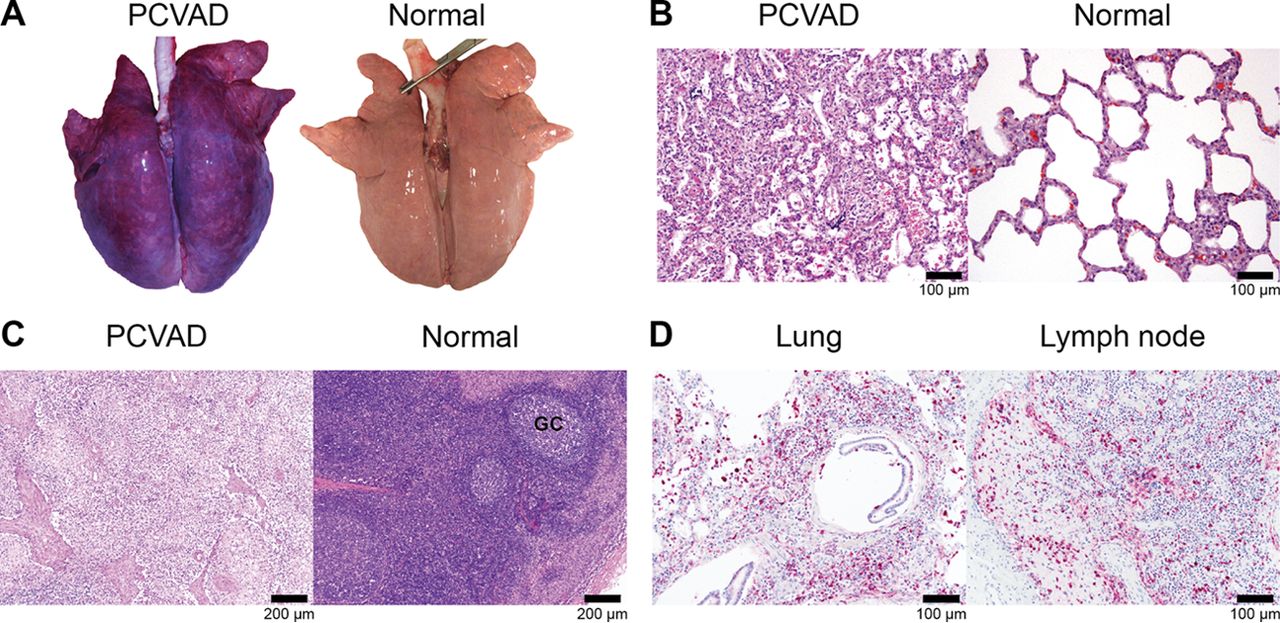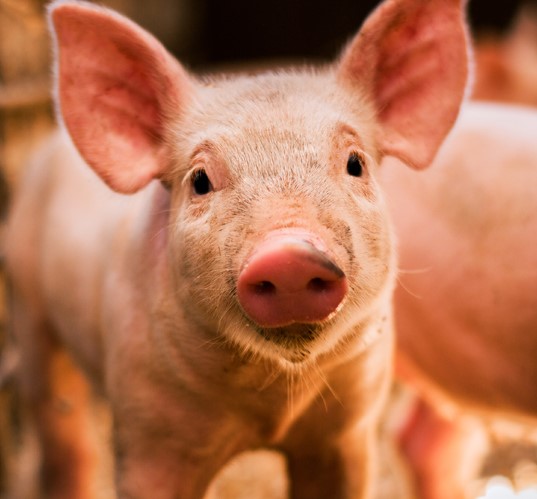Suspension Culture Service for PCV2 Vaccine Production
Creative Biolabs optimizes the complete vaccine production system and provides comprehensive media development services for vaccine production. We offer formulations for cell lines that act as hosts for viral production. Count on us to help address your challenges and get your process going.
Porcine Circovirus Type 2 (PCV2)
Porcine circovirus (PCV) is a member of the virus family Circoviridae. The viral capsid is icosahedral and approximately 17 nm in diameter. It is a single-stranded DNA virus which is nonenveloped with an unsegmented circular genome. There are 2 strains: type 1 and type 2. PCV2, which causes porcine circovirus associated disease, is the one of the most economically important pathogens of pigs. However, viral infection by itself tends to cause only mild disease, and co-factors such as other infections or immunostimulation seem necessary for development of severe disease. For example, concurrent infection with porcine parvovirus or PRRS virus, or immunostimulation lead to increased replication of PCV-2 and more severe disease in PCV-2-infected pigs.

Fig.1 Gross and microscopic lesions associated with PCVAD.
Porcine Circovirus Type 2 Vaccines
Before the introduction of the vaccine, the control of PCVAD was limited mainly to improving management strategies and controlling co-infections. Vaccination is now a major tool for the control of PCV2 infection. Commercial PCV2 vaccines were initially developed to control PMWS, but they are now also used against other PCVAD. Commercially available PCV2 vaccines differ in their antigen and adjuvant types, in the recommended animals for use (sow or piglet or both) and in the dosage (one or two doses).
- Inactivated vaccine (oil-adjuvanted) based on the classical approach;
- Virus-like particles (VLPs) based on an open reading frame 2 (ORF2; capsid) protein expressed in the baculoviral system;
- Based on a chimeric PCV1/2 virus containing the genomic backbone of the non-pathogenic PCV1, with the ORF2 capsid gene replaced by that of PCV2.
Shortcomings of Traditional PCV2 Vaccine Production
Cultivation of PCV2 virus in vitro has been carried out in porcine kidney epithelial (PK-15) in laboratories world-wide. At present, a micro-carrier adherent culture production method utilizing a PK-15 cell line to culture the pseudorabies virus has already been developed. Although the technological method can reach certain production scale, it still has some defects: 1) High production cost (micro-carriers are difficult to reuse); 2) Low yield of the viruses (the culture density of adherent cells is limited by the adherent area); 3) Complicated process (the media needs to be changed); 4) Pollution (mycoplasma, chlamydia or animal protein may be introduced).
Suspension Culture for PCV2 Vaccine Production
In view of the deficiencies of the traditional methods, Creative Biolabs is developing a serum-free media for full suspension culture of PK-15 cells. This media has been tested for its ability to support high-density suspension cultures of ST cells adapted from adherent culture platforms. This is a complete media that will support growth of PK-15 cells without further supplementation. The media supports the high-density full suspension culture of the PK-15 single cells, greatly shortening the time for educating the PK-15 cells from the serum adherent cultured cells to the serum-free full suspension cultured cells.
Features

- Full suspension for PK-15 production;
- Serum-free;
- Exclusive suspension media;
- Suitable for a variety of PK strains;
- Used for PCV2 inactivated vaccine production.
Advantages
- Low cost: low serum, no micro-carriers, low labor cost;
- Easy to operate with high stability: reducing the burden of downstream purification process;
- Low side effects: low impure protein;
- High antigen content: completely meet the requirements for the semi-finished product of the antigen;
- Suitable for large-scale production.
Reference
- Niederwerder MC. (2015). “Vaccination with a Porcine Reproductive and Respiratory Syndrome (PRRS) Modified Live Virus Vaccine Followed by Challenge with PRRS Virus and Porcine Circovirus Type 2 (PCV2) Protects against PRRS but Enhances PCV2 Replication and Pathogenesis Compared to Results for Nonvaccinated Cochallenged Controls.” Clin Vaccine Immunol. 22(12): 1244-1254.
Related Products
All of our products can only be used for research purposes. These vaccine ingredients CANNOT be used directly on humans or animals.


